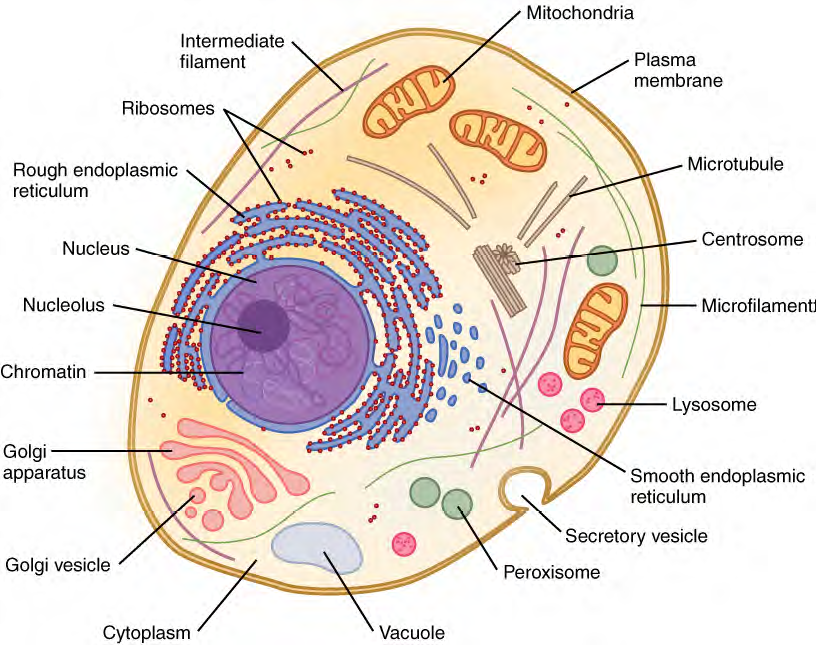Understanding How Body Functions Through Components Of Cell.
Cells Functions Are Body Functions And Cells Health Is Body Health.
Understanding the Basics of Cellular Health in a View of a Building Site
Imagine your body as a bustling metropolis, with cells being the building blocks that keep everything running smoothly. Just like a city’s infrastructure, the health of these cellular “building blocks” is crucial to your overall well-being.
The Intricate World of Cells
From providing energy to fighting off infections, cells perform a myriad of functions that sustain life. Let’s delve into the microscopic world of cells and uncover their secrets.

The basis of Non Communicable Diseases (NCDs) prevention and Care is to understand how body cells function.
- Cytoplasm as the Site Ground, the foundation of greatness!
Cytoplasm is the fluid that fills the cell, containing organelles (or all the different parts of the building site) and facilitating movement. It’s like a meticulously prepared construction ground where it all begins. Every inch is planned to support the towering structures to come, ensuring stability and strength from the ground up. Cytoplasm for cell must be a “Solid ground for solid progress.” The cell image is downloaded for free at http://cnx.org/content/col114696/latest/.
2. Cell Membrane as Fence and Entry around the construction site, the “gateway to our future.” Accessibility meets security here.
Our sturdy fence ensures the safety of our site while the welcoming entry gate offers easy access to our workers and visitors. This balance of security and accessibility sets the tone for our entire project. This cell’s protective barrier, regulating what enters and exits is how body secure our future within as skin (and mucosa) do it out.” Only controlled workers, materials, and machinery enter or leave the site.
3. Nucleus: The control center, housing DNA and directing cellular activities. It’s the brain behind the brawn. It’s a Site Office, the masterminds making it all happen.
The nucleus is like the main office on the construction site where the manager works and where planning meets execution. Here, engineers and project managers strategize and oversee the entire construction process, ensuring everything runs smoothly and on schedule.
4. Mitochondria: The power plants, generating energy for the cell’s functions. They are generator and/or Electric Connection on the construction site.
They power progress providing the energy needed to power all the activities (Adenosine triphosphate, ATP), just like generators supply electricity for the tools and equipment. Because body has uninterrupted work, it requires uninterrupted energy as our generator and electric connection systems guarantee a constant power supply, ensuring that our construction activities never face downtime.
As site office controls everything that happens on the site, the nucleus holds the plans (DNA) and gives orders to all the workers. It’s the command center of our operations.
5. Endoplasmic Reticulum (ER): Crafting the essentials, where raw materials become masterpieces.
Endoplasmic Reticulum is a manufacturing hub, producing proteins, lipids, Conveyor Belts and Transport Vehicles that move materials around the site: it’s a craftsmanship in action. In our manufacturing hub, raw materials are transformed into the essential components of our buildings. Whether it’s bricks, metal beams, or other crucial elements, this is where the magic happens.
– Rough ER: Studded with ribosomes, involved in protein synthesis. It is like the workshop where items are made. Ribosomes are like the bricklayers or builders on the site. They build the structures (proteins) needed for the cell, similar to how builders construct walls and buildings. Manufacturing Hub for Bricks, Metal, etc.
– Smooth ER: Lacks ribosomes and is like the transport system moving materials to where they are needed. It’s also involved in lipid synthesis and detoxification.
6. Golgi Apparatus: a warehouse of packaging and shipping center on the construction site, modifying and transporting proteins. Our warehouse is stocked with all the necessary supplies, ensuring that we are always prepared for the demands of construction.
It packages and sends out materials (proteins) to different parts of the cell, just like how a warehouse packs and ships materials to where they are needed on the site.
7. Lysosomes: The waste disposal units, breaking down cellular debris. (Cleanup Crew) (ingorofani whileebarrow), ibitiyo, lateaux, laclettes, tridents, balais)
They get rid of waste and debris, breaking down materials that are no longer needed, just like how the cleanup crew removes trash and recyclables from the site.
8. Cytoskeleton (Scaffolding and Framework)
The cytoskeleton is like the scaffolding and framework on the site.
It supports the cell, giving it shape and helping with movement, similar to how scaffolding supports a building under construction.
9. Vacuoles
Vacuoles are like storage sheds on the construction site. Keeping it organized will impact on efficiency through order. Our storage facilities ensure that all materials are systematically stored and easily accessible, keeping our workflow efficient and organized. Vacuoles store materials and waste products, keeping everything organized and out of the way, just like sheds store tools and supplies. Waste products must be properly managed and disposed of, because clean site creates safe site and clear future.
By comparing cell organelles to parts of a construction site, it’s easier to see how each part of the cell works together to keep everything running smoothly, just like a well-organized construction site.
The coming blog will cover nutrients we found in diet and drink and their role in human life and health.


